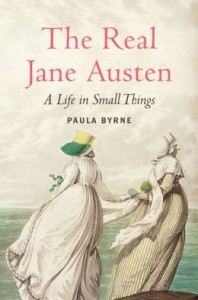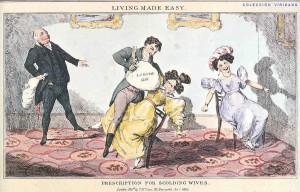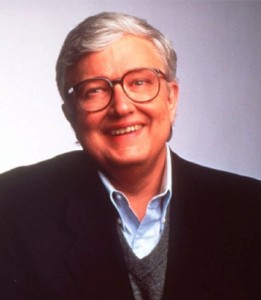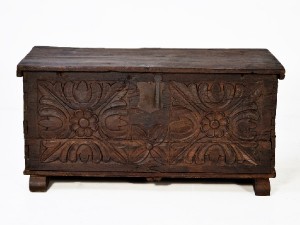Your regularly scheduled Tuesday post will return next week! I got two sets of revisions this week and am going into the cave…see you when it’s all over…

Your regularly scheduled Tuesday post will return next week! I got two sets of revisions this week and am going into the cave…see you when it’s all over…
 This week I am still buried in revisions, as well as a broken hot water heater (oh nooo! It just shows me I could never have handled actually living in historical eras–I need my hot showers). But I am also reading a great book, Paula Byrne’s The Real Jane Austen: A Life in Small Things, which I’m enjoying a lot.
This week I am still buried in revisions, as well as a broken hot water heater (oh nooo! It just shows me I could never have handled actually living in historical eras–I need my hot showers). But I am also reading a great book, Paula Byrne’s The Real Jane Austen: A Life in Small Things, which I’m enjoying a lot.
This book isn’t just a straightforward biography. Each chapter begins with an object from Austen’s life that evokes a key moment in her life or work. It’s a fun structure that paints a portrait of a witty, socially and politically aware woman whose books are very much of their time as well as being so timeless we love her characters still. Some of the objects are the topaz cross necklaces her brother gave her; her laptop desk; an Indian shawl; a royalty check; a barouche, etc etc. I started looking around my desk to see what I might have that could be in a comparable story about my life. (No royalty check at the moment, alas!)
 Instead of an Indian shawl I have a pink hoodie hanging on the back of my chair…
Instead of an Indian shawl I have a pink hoodie hanging on the back of my chair…
Instead of a vellum notebook, I have a Hello Kitty notebook from Target…
Instead of a quill pen, I have a Disney princess pen with a feathered skirt–it writes in yellow and blue ink…
 Speaking of Hello Kitty, I have a reading HK I got from a McDonald’s Happy Meal! I had to stop this post for a minute to make her move the little book…
Speaking of Hello Kitty, I have a reading HK I got from a McDonald’s Happy Meal! I had to stop this post for a minute to make her move the little book…
I have stacks of research books, little slips of paper with random notes written on them, and an Eiffel Tower cocktail shaker I got as a wedding present. Not as nice as Austen’s little table maybe, but at least no one will interrupt me to feed the chickens or do some embroidery!
What’s on your desk? What items would evoke your world? And on a whole different note–I am trying to plot a Christmas short story and am having a hard time, since tulips are blooming outside my window and I’ve been shopping for shorts on J.Crew.com. What do you love to see in holiday stories???
So, tomorrow I have to go in for a small surgery (luckily outpatient, and I am stocked up on pudding cups and Jane Austen movies for recovery…), but it made me think again how grateful I am for modern surgery! Especially anasthetics and painkillers. And when I looked around for something to talk about on the blog today, I found out that ether was first used in March for surgical purposes (though I couldn’t find an exact date!). Also nitrous oxide played a very important role on last weekend’s episode of Call the Midwife…
So here is a very short look at the history of some surgical painkillers….
 Nitrous oxide (laughing gas) was first synthesized by English and chemist Joseph Priestly in 1772. He called it phlogisticated nitrous air and published his discovery in the book Experiments and Observations on Different Kinds of Air (1775), where he described how to produce the preparation of “nitrous air diminished”, by heating iron filings dampened with nitric acid. The first important use of nitrous oxide was by Thomas Beddoes and James Watt, who discussed it in their book Considerations on the Medical Use and on the Production of Factitious Airs (1794). James Watt also invented a new machine to produce “Factitious Airs” (i.e. nitrous oxide) and a novel “breathing apparatus” to inhale the gas.
Nitrous oxide (laughing gas) was first synthesized by English and chemist Joseph Priestly in 1772. He called it phlogisticated nitrous air and published his discovery in the book Experiments and Observations on Different Kinds of Air (1775), where he described how to produce the preparation of “nitrous air diminished”, by heating iron filings dampened with nitric acid. The first important use of nitrous oxide was by Thomas Beddoes and James Watt, who discussed it in their book Considerations on the Medical Use and on the Production of Factitious Airs (1794). James Watt also invented a new machine to produce “Factitious Airs” (i.e. nitrous oxide) and a novel “breathing apparatus” to inhale the gas.
The machine to produce “Factitious Airs” had three parts: A furnace to burn the needed material, a vessel with water where the produced gas passed through in a spiral pipe (for impurities to be “washed off”), and finally the gas cylinder with a gasometer where the gas produced, ‘air,’ could be tapped into portable air bags (made of airtight oily silk). The breathing apparatus consisted of one of the portable air bags connected with a tube to a mouthpiece. In the town of Hotwells in 1798, Thomas Beddoes opened the “Pneumatic Institute for Relieving Diseases by Medical Airs”. In the basement of the building, a large-scale machine was producing the gases under the supervision of a young Humphry Davy, who was encouraged to experiment with new gases for patients to inhale. In 1800, Davy published his Researches, Chemical and Philosophical where he notes the analgesic effect of nitrous oxide and its potential to be used for surgical operations. (But another 44 years went by before doctors attempted to use it for surgery. The use of nitrous oxide as a recreational drug at “laughing gas parties” became a trend beginning in 1799. While the effects of the gas generally make the user appear “stuporous, dreamy and sedated,” some people also “get the giggles” and probably say some pretty embarrassing stuff….
The first time nitrous oxide was used as a surgery anasthetic was when Connecticut dentist Horace Wells demonstrated on a dental extraction on Dec. 11, 1844. But this new method didn’t come into general use until 1863, when Dr. Gardener Colton successfully started to use it in all his “Colton Dental Association” clinics in NYC. Over the next three years, Colton successfully administered nitrous oxide to more than 25,000 patients.
Today nitrous is most often used in conjunction with local anesthetic in dental surgery. Nitrous oxide was not found to be strong enough for use alone in major surgery in hospital settings. Sulfuric ether came into use in October 1846, along with chloroform in 1847. (Queen Victoria was a great advocate for the use of chloroform in childbirth). When Joseph Clover invented the “gas-ether inhaler” in 1876, it became a common practice at hospitals to initiate all anesthetic treatments with a mild flow of nitrous oxide, and then gradually increase the dose with the stronger ether/chloroform. Clover’s gas-ether inhaler was designed to supply the patient with nitrous oxide and ether at the same time, with the exact mixture being controlled by the operator of the device. It remained in use by many hospitals until the 1930s. (Modern machines still use the same principle launched with Clover’s gas-ether inhaler, to initiate the anesthesia with nitrous oxide, before the administration of a more powerful anesthetic.)
What medical advances are you grateful for today?? And what movie would you recommend I watch to make me feel better?
 “Kindness” covers all of my political beliefs. … I believe that if, at the end, according to our abilities, we have done something to make others a little happier, and something to make ourselves a little happier, that is about the best we can do. To make others less happy is a crime. To make ourselves unhappy is where all crime starts. We must try to contribute joy to the world. That is true no matter what our problems, our health, our circumstances. We must try. I didn’t always know this and am happy I lived long enough to find it out. Roger Ebert, 1942—2013
“Kindness” covers all of my political beliefs. … I believe that if, at the end, according to our abilities, we have done something to make others a little happier, and something to make ourselves a little happier, that is about the best we can do. To make others less happy is a crime. To make ourselves unhappy is where all crime starts. We must try to contribute joy to the world. That is true no matter what our problems, our health, our circumstances. We must try. I didn’t always know this and am happy I lived long enough to find it out. Roger Ebert, 1942—2013
“The more Roger became a prisoner of his body, the more he seemed to escape into his rich and sophisticated mind. By the agreement of almost everyone I know, his writing in these last years was among the best he’d ever done, more personal and expansive, marked by a still-astonishing rate of productivity. He wrote a wonderful memoir, close in its deceptively profound, plainspoken way to two of the writers Roger most admired: Charles Dickens and Samuel Johnson. And indeed, Roger was nothing if not an Anglophile: Among the least known books he authored is a slender volume called ‘The Perfect London Walk,’ an instructional travel book that, having taken the journey it maps, I can assure you is a rare case of truth in titling.” (Scott Foundas, Variety)
Last week, a great person passed away when Roger Ebert died at age 70. Since he seemed above all to appreciate great storytelling (and to be a great storyteller himself!) I wanted to talk a little about him here.
I love movies for the same reason I love books and writing—I love stories and characters, I love how they can show us deep truths about ourselves and the world around us in a way nothing else can. In Roger Ebert’s reviews and blog essays, I found this same passion, and was always inspired by what he had to say. Every week I ran to his blog to see what new movies were coming out, because he always told us not only what to see but how to think about what we had seen. How to find the truth of every story, good and bad, in our own hearts. (In fact, the number one best piece of writing advice I ever read came from him–”It’s not what a movie is about, it’s how it is about it.” This is true for books as well as something like, say, Tree of Life or La Dolce Vita)
“He saw, and felt, and described the movies more effectively, more cinematically, and more warmly than just about anyone writing about anything. Even his pans had a warmth to them. Even when you disagreed with Roger you found yourself imagining the movie he saw, and loved (or hated) more than you did.” (Michael Phillips, Chicago Tribune)
His reviews were always witty and intelligent, clearly written and evocative. Never snobby (he loved a great popcorn movie as much as French indie) or faux-populist. Just clear, beautiful writing evoking what makes a story great, or even what makes it, well, suck. He always just seemed like a super-smart guy who wanted to talk to us all about movies, who wanted to hear what we thought as much as he wanted to tell us his own opinions. (his very active Twitter account can testify to how much he seemed to love that connection!). And his writing on politics and social causes was just as evocative and amazing as his movie reviews. He loved movies, people, and life, and it always came through in his writing.
“The irony is that it all feels so personally sad. It feels so personally, profoundly awful and unfair, and I feel it with the grief nerves, not just the admiration nerves, because people whose books you destroy from overuse as a 16-year-old, you will grieve when they die as if you knew them, whether they are novelists or critics. But still, after all that, I was doing all right until I remembered that he’s not going to write about any more movies. And I’m still not ready for that.” (Linda Holmes, NPR)
He was an inspiration in real life as well. His great love for his wife and family, his kindness and humanity, the way he forged ahead with life in the face of immense health problems that would have made most of us give up, the way he always found wonder and connection no matter what, is an example for everyone in the best way to live our lives and make the most of our precious time and talents.
“‘Start writing. Short sentences. Describe it. Just describe it.”
“Roger said, when I asked him about writer’s block. Then he quoted the first three paragraphs of his ‘Persona’ review and told me that it had completely baffled him in 1967 but this strategy worked brilliantly. Tonight, as I sit here numbly staring at the screen with the hardest writer’s block I’ve ever known, I place my fingers on the keyboard to follow the advice of the greatest man I know, and just describe it.” (Grace Wang)
(You can read his last review, and many tributes, at his website…)
It’s hard when we lose our heroes. It’s hard to know I will never see what he thinks about a new movie again. But I can enjoy re-reading his words, and can be inspired by them all over again. Who are some of your heroes this week?? What inspiration have you found at the movies?
This weekend, I forced myself to take a look at my jungle-cave of a garage (seriously, there is barely room in there for me to pull in my car AND get out of it!). There are boxes of out-of-season purses and shoes, Christmas decorations, gardening stuff, and of course mostly books. Books I’ve stored, and back copies of my own books, which have gotten out of control. So I am having spring-cleaning giveaways over the next few weeks on my blog to find some of those copies new homes. This week–One Naughty Night, the first in my new Laurel McKee “The Scandalous St. Claires” series. (I said on my blog 10 copies, but I found another stash so I have more to give away…and if you like it and leave a review on Amazon, I will send you a copy of the sequel too!!) I am determined to get organized and make room for more books!!!
Visit my blog and leave contact info to enter…
(And if any of you authors know who might take foreign language copies, let me know…)
This is what I store things in:
If I lived in the Regency, things might be a little more elegant. I could use a leather trunk:
Or an oak trunk (this one is French):
 Or a portable writing box: (for a great story about Jane Austen’s almost-lost portable writing desk, go here…)
Or a portable writing box: (for a great story about Jane Austen’s almost-lost portable writing desk, go here…)
Or an armoire:
What are your favorite organizational tips??